
While generative AI can produce images with superficial visual appeal, especially to those who haven’t seen much AI art, they tend to fall apart under closer inspection. Elements are assembled almost randomly, and the overall image lacks the meaning, coherence and intention that can only come from a human artist.
A way artists can fight back against generative AI is to lean into the things that only a human can do, for example using narrative to capture emotion, and convey something personal about themselves in their work.
PAINTING WITH WORDS
Some narratives will work better than others in paintings. Consider situations that feature opposing forces or some form of tension. Senior concept artist Titus Lunter says: "Interesting stories are inherently about conflict." Once you've found your conflict, you need to define it in words. Your choice of words is important, because these will be the keywords that you use to build your image. Titus explains keywords "are broadly understood by t most people, but mean very different and personal things to everyone". For example: "While cosy might be under blankets, it also might be by a fire, or on a patio with a nice drink." These are s all literal scenarios that you could paint to evoke a feeling of cosiness. "Understanding that these words mean different things to different people will help you understand your own voice," Titus adds.
Your unique voice and perspective is what makes your work different to everyone else's. He says: "In a way, you and your painting are having a dialogue on how to best capture what you want to say and what that means." This happens in two ways: your choice of what to paint, and how you use elements such as the composition, colour and texture used to paint it.
この記事は ImagineFX の June 2024 版に掲載されています。
7 日間の Magzter GOLD 無料トライアルを開始して、何千もの厳選されたプレミアム ストーリー、9,000 以上の雑誌や新聞にアクセスしてください。
すでに購読者です ? サインイン
この記事は ImagineFX の June 2024 版に掲載されています。
7 日間の Magzter GOLD 無料トライアルを開始して、何千もの厳選されたプレミアム ストーリー、9,000 以上の雑誌や新聞にアクセスしてください。
すでに購読者です? サインイン
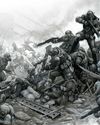
PAINT EPIC BATTLES IN TRADITIONAL INK
Warhammer illustrator THOMAS ELLIOTT shows you how to create an epic science fiction fight scene with this step-by-step guide
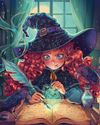
CONJURE MAGIC ILLUSTRATIONS
Daria Anako demonstrates her process for creating a whimsical piece of art with some spellbinding touches
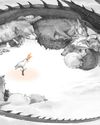
First Impressions
We discover the early influences that inspired the artist
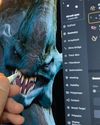
ZBrush for iPad
GAME CHANGER The desktop version of popular 3D sculpting software ZBrush has been redesigned for iPad - and it's brilliant

BenQ GW2786TC
GET AN EYEFUL Don't scrimp out on your health with a monitor that's kind on the eyes and good for creative tasks
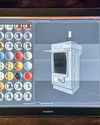
Huion Kamvas Pro 19
TABLET WARS An attractive pen display does an excellent job of balancing price and performance as it sets out to challenge its rivals in the mobile marketplace
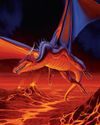
DRAGON OFORCEC
Legendary D&D artist Larry Elmore explains the keys to crafting timeless fantasy art.
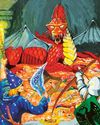
DUNGEON MASTERS
ImagineFX marks the milestone 50th anniversary of the launch of Dungeons & Dragons with a look at its rich tradition of illustration
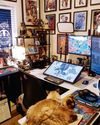
Erik Ly
Gamer's haven Why the artist enjoys a maximalist aesthetic more than the minimalist approach.

2D meets 3D: How the workflows are merging
Interdimensional As VFX and animation evolve and tools become more accessible, Tanya Combrinck asks whether the separation between the mediums is reducing